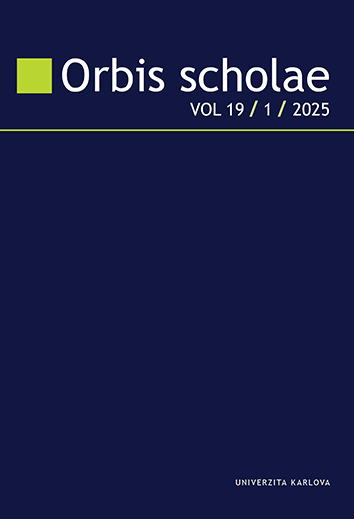We inform authors and readers that, following an agreement with the Karolinum publishing house, from 2024 (Volume 18), the journal Orbis scholae will be published only in electronic form.
Orbis scholae is an academic journal published by Charles University, Prague. It features articles on school education in the wider socio-cultural context. It aims to contribute to our understanding and the development of school education, and to the reflection of teaching practice and educational policy.
The journal is indexed in SCOPUS, CEEOL, DOAJ, EBSCO, and ERIH Plus.
ORBIS SCHOLAE, Vol 7 No 1 (2013), 49–66
Subjektivní hodnocení problémů s pohybem: Užití parametrického modelu metody ukotvujících vinět
[Subjective assessments of problems with moving around: Use of the parametric model of the anchoring vignette method]
Hana Voňková
DOI: https://doi.org/10.14712/23363177.2015.25
published online: 05. 02. 2018
abstract
Ve výzkumných šetřeních je sebehodnocení respondentů často užíváno k porovnání jejich objektivního stavu napříč různými skupinami. Problémem však je, že sebehodnocení může záviset nejen na objektivním stavu respondentů, ale také jejich odlišné interpretaci jednotlivých kategorií škály. Řešení tohoto problémů nabízí metoda ukotvujících vinět. Na základě hodnocení hypotetických osob v krátkých příbězích (ukotvujících vinětách) je identifikována heterogenita užívání škály, což je následně využito pro korekci rozdílnosti užívání škály. Tento článek se zaměřuje na identifikaci heterogenity užívání škály při subjektivním hodnocení problémů s pohybem. Výběr tvoří obyvatelé starší padesáti let v deseti evropských zemích. Sběr dat proběhl v období 2006−2007. Je ukázáno, že belgičtí a italští respondenti jsou optimističtější při hodnocení problémů s pohybem. Čeští a nizozemští respondenti volí méně často koncové body škály. Po korekci heterogenity užívání škály je nejlepší aktuální stav pohyblivosti nalezen v Dánsku, Francii a Švédsku, zatímco čeští a polští senioři jsou nejméně mobilní. Menší problémy s pohyblivostí mají mladší muži s vyšším vzděláním. Po korekci užívání škály se rozdíly mezi muži a ženami a respondenty s vyšším a nižším vzděláním ještě zvyšují, neboť muži a respondenti s vyšším vzděláním označují daný problém s větší pravděpodobností za horší. In survey research, respondents’ self-assessment is often used to compare the objective state across different groups. The problem is that self-assessments may depend on both the respondents’ objective situation and the way in which they interpret scale categories. The anchoring vignette method offers a solution of this problem. Using evaluation of hypothetic persons in short stories (anchoring vignettes) the heterogeneity of the scale use is identified and used for correction of the response scale differences. This article aims at identification of heterogeneity in scale use, when respondents’ problems with moving around are being studied. The sample consists of people aged fifty or older from ten European countries. Data collection was done in 2006−2007. It is shown that Belgian and Italian respondents are more optimistic when evaluating problems with moving around. Czech and Dutch respondents use the end points of the scale less often. After the correction for heterogeneity in reporting behavior, the best actual situation is found in Denmark, France and Sweden, while Czech and Polish seniors are the least mobile. Younger men with higher education have less problems with moving around. After the correction of reporting behavior the differences between both men and women and respondents with higher and lower education increase because men and respondents with higher education perceive a given problem as worse with higher probability.
keywords: sebehodnotící otázky; heterogenita užívání škály; CHOPIT model; SHARE; pohyblivost self-assessment questions; heterogeneity in reporting behavior; CHOPIT model; SHARE; mobility

Subjektivní hodnocení problémů s pohybem: Užití parametrického modelu metody ukotvujících vinět is licensed under a Creative Commons Attribution 4.0 International License.
157 x 230 mm
periodicity: 3 x per year
print price: 150 czk
ISSN: 1802-4637
E-ISSN: 2336-3177
